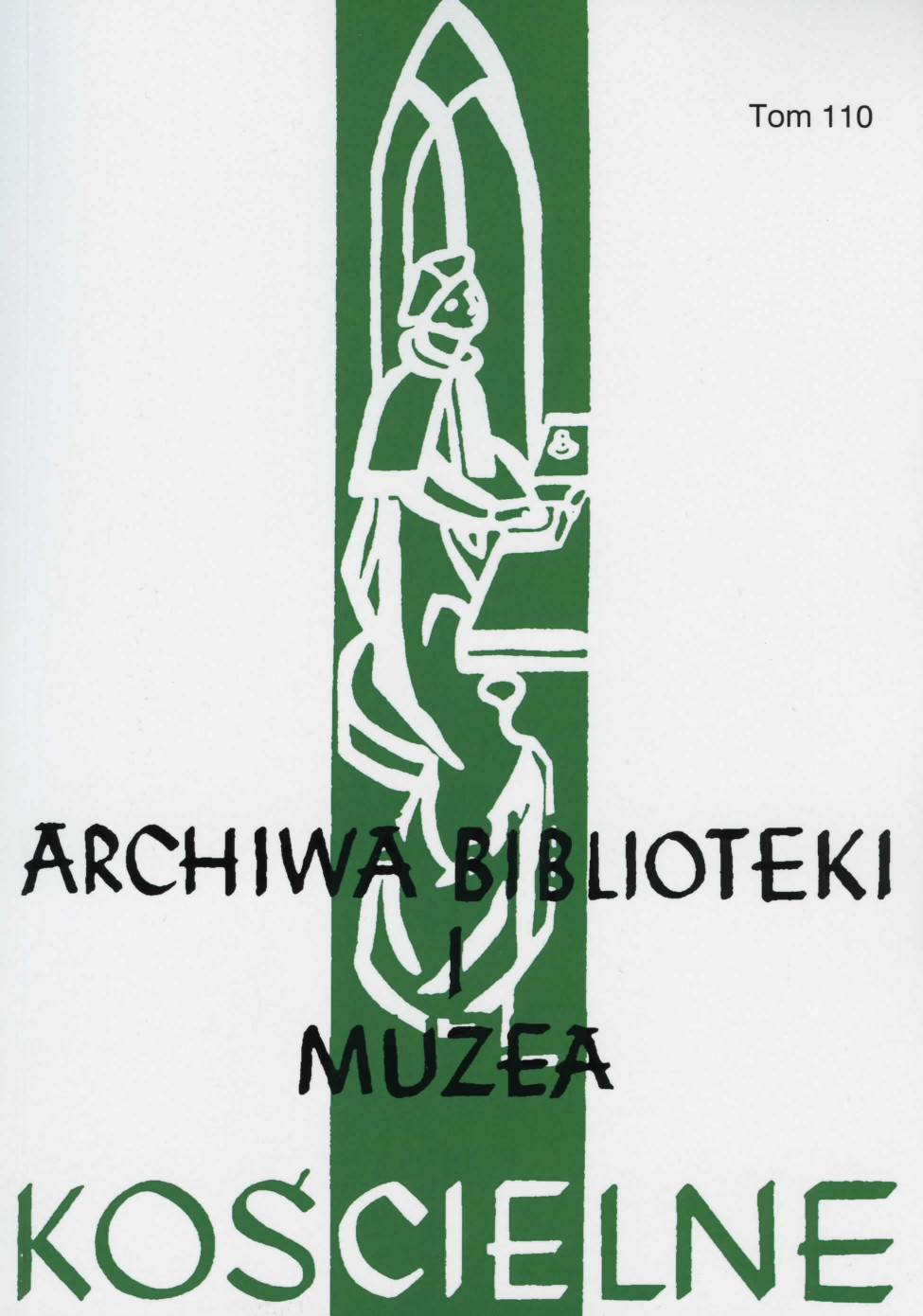Przemyskie synody diecezjalne biskupa Józefa Sebastiana Pelczara w 1902, 1908 i 1914 roku
The synods of Przemyśl Bishop Józef Sebastian Pelczar of 1902, 1908 and 1914
Author(s): Grzegorz Bujak Subject(s): Christian Theology and Religion, History, Law, Constitution, Jurisprudence, History of Religion
Published by: Katolicki Uniwersytet Lubelski Jana Pawła II - Wydział Teologii
Keywords: a synod; the diocese of Przemyśl; Bishop Józef Pelczar
Summary/Abstract: In the 19th century, no diocesan synods were convened in Polish lands. It was not until the beginning of the 20th century that Bishop S. Pelczar organized three synods in 1902, 1908 and 1914. They played a crucial role in the revival of the synod life in Polish Church, which occurred after regaining independence in 1918.These synods had their internal dynamics and reflected important social and religious changes. A special attention should be paid to the synod of 1902. Numerous priests, including parish priests and curates, were involved in preparing synod statutes. Another important element was a discussion held during deanery congregations where parish priests could put forward their suggestions. Through taking part in these preparatory forms, priests could feel that they contributed to the regulations the synod introduced. A proper synod is of a formal and ceremonial nature, which is in accordance with the church tradition dating back to the post-Tridentine period. In general, the synod was of a liturgical nature and thus there was not much time to discuss the statutes. In order to allocate more time to discussion and reduce ceremonies, Bishop S. Pelczar decided to convene the two subsequent synods of 1908 and 1914 as synod congregations. The character of the discussion also changed. Instead of the traditional reading of the statutes, bishops and other speakers gave their presentations followed by discussions, after which synod directives were formulated. Synod gatherings resulted in legal decisions announced by the bishop who had the power to do so. Each time the decisions had a slightly different form despite the fact that they were based on the statutes. The synod of 1902 passed 619 statutes; they had a very traditional form and structure typical of the post –Tridentine period. The statutes of 1908 and 1914 did not revoke the resolutions of 1902 but supplemented and clarified them taking account of the evaluation of their effects in practice. Their aim was to supplement and clarify the previous resolution, not to make dramatic changes. The acts of the synod differed markedly from the previous ones. These were the reports of the synod sessions. Bishop’s ascetic conferences were summarized while problem presentations delivered by priests were published in full. Then the discussions and bishop’s conclusions were summarized, which was followed by the synod resolutions concerning the issues addressed in the presentations. The resolutions focused on conclusions and recommendations on how to solve some problems, including pastoral ones.
Journal: Archiwa, Biblioteki i Muzea Kościelne
- Issue Year: 2018
- Issue No: 110
- Page Range: 77-91
- Page Count: 15
- Language: English

